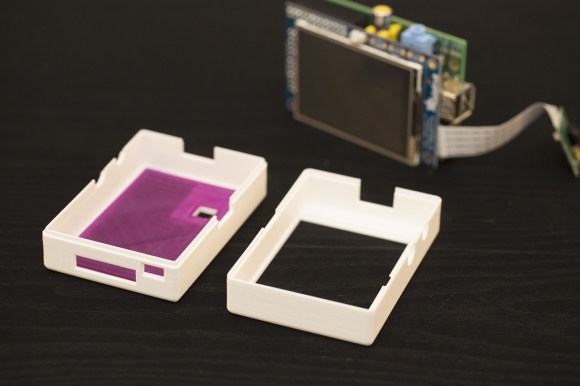
Adafruit has a tutorial on their site that shows how to fashion together a cloud-connected, point-and-shoot camera. The best part of this project is that it can be customized to the heart’s content, unlike traditional digital cameras or smartphones. The integrated touchscreen and open-source computing allows for Instagram-like filters that can be scrolled through easily. No case is needed, but a 3D printed one can be attached for a more polished outcome.
The backup system of this Raspberry Pi-enabled device connects wirelessly to the internet and uploads the photos through the use of a Dropbox API. This functionality is great for syncing the camera to a cloud based server which then can be turned into a makeshift picture database for a website. The camera might be good for recording timelapse photography as well where a program could automatically create GIFs from the backup photos. It doesn’t seem like it would be hard to make either, especially because Adafruit pretty much always provides great documentation. Their videos are usually good too. The one posted below is relatively short, but provides enough information to see how it works.














i have seen a few of these around, not the most practical but a fun little project
those adafruit touchscreens are pretty badass. i got one and it has made the raspberry pi somewhat more useful than it had been.
I have been building a camera like this and currently having adafruit staff help troubleshoot this camera program they wrote because its vary buggy and truly a test of your patience. Adafruit no longer sells the resistive touch screen used in this tutorial but have a capacitive touch replacement that does not work properly with this software. Its unfortunate because the software adafruit clobbered together is the best we have for using the pi camera as an actual point and shoot.
Hackaday catering to the industry. Selling out. A shame.
An open source wifi module with UART/SPI/GPIOs/PWM for intelligent control,but fingertip-sized only
http://igg.me/at/xwifi/x